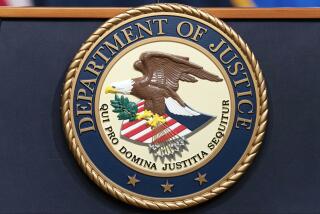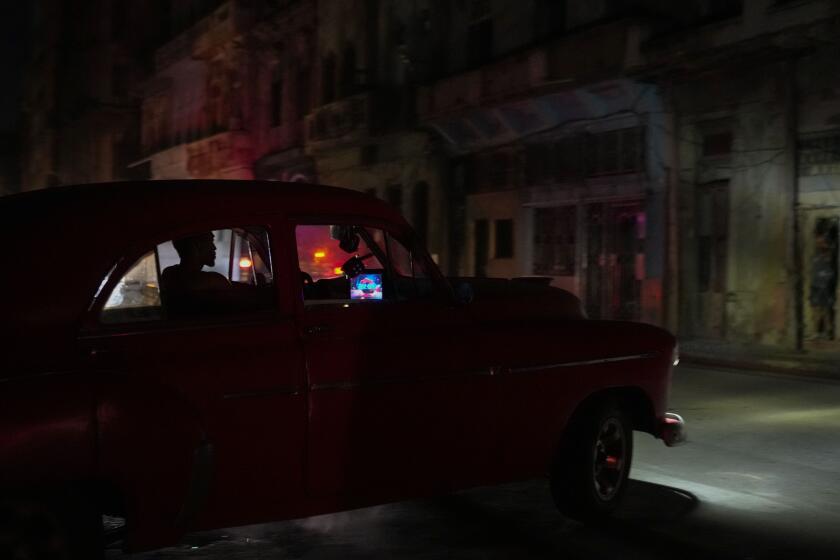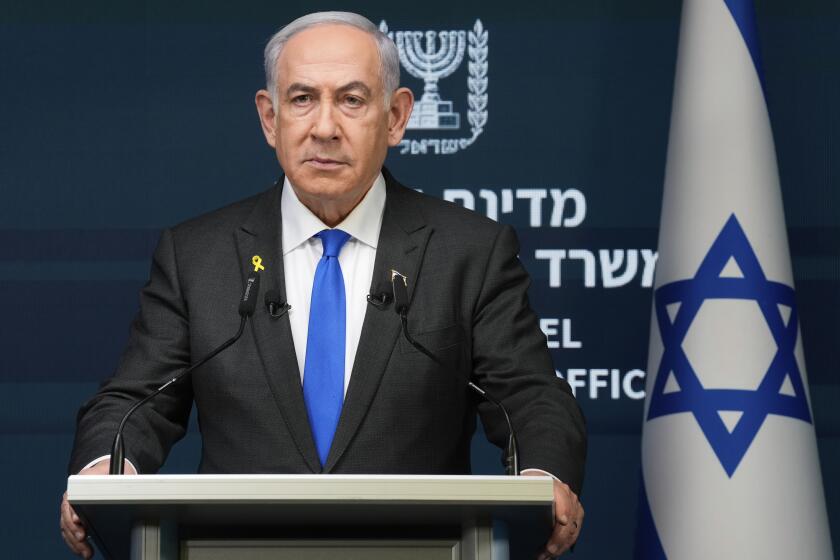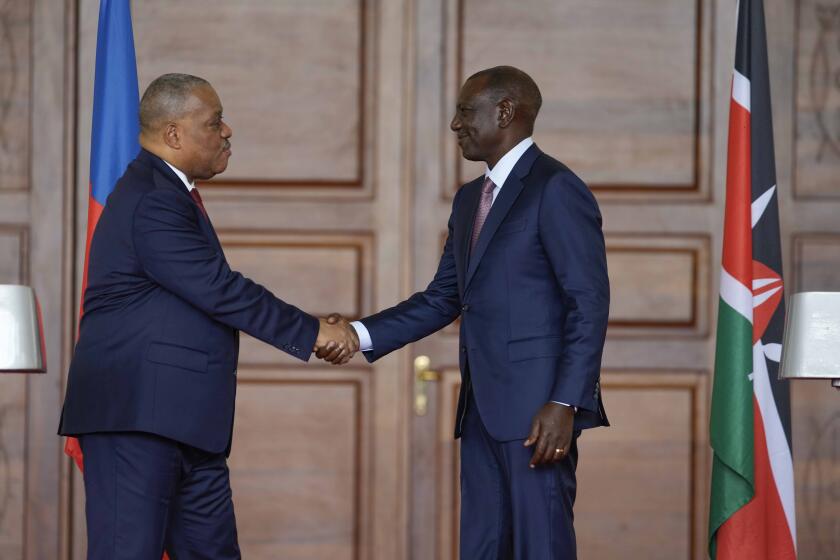Plotters’ Bomb Clinched Verdict Against Baghdad : Evidence: Device seized in Kuwait resembled one linked to Iraq earlier. Interviews by FBI buttressed case.
The clincher in concluding that Iraq sponsored the car bomb attempt on George Bush’s life was that the huge explosive device seized by authorities bore striking similarities to a bomb linked to Iraqi agents in Turkey during the Persian Gulf War, government sources said Saturday night.
FBI interviews of all 14 plot participants also buttressed the forensic evidence and the conclusion that Iraq directed the attempt, a Justice Department official said.
Shortly after the assassination scheme was discovered in Kuwait and foiled, a team of FBI technicians and experts flew to Kuwait city and began disassembling and analyzing the white Toyota Land Cruiser seized from the plotters and the deadly cargo it contained.
Inside the body panels, 175 pounds of explosives were carefully packed. Detonation wiring was concealed under the front floorboard. The bomb possessed devastating power and was designed so that it could be detonated by manual remote control or by timer.
The vehicle itself was to be part of the killing device by sending shards of metal at high velocity, with power to kill people within a radius of 400 yards, government officials said.
Over a two-month period, agents compared what they found with other devices planted successfully and unsuccessfully by terrorists of various origins around the world.
“Key components, including the remote-control firing device, the plastic explosives, the blasting cap, the integrated circuitry and the wiring were built or modified by the same person or persons who built or modified bombs previously recovered from the Iraqis,” a senior intelligence official said in an interview.
Indeed, photographs of the radio-controlled firing system showed it to be visually indistinguishable from one used in the bomb planted in Turkey.
The link was too strong to be a coincidence. “ . . . Iraq planned, equipped and ran the terrorist operation that threatened the life of President Bush in Kuwait city in April,” the intelligence official said.
Sixteen people were arrested and 14 were charged by Kuwaiti authorities with joining in the plot. They allegedly smuggled the bomb hidden in the vehicle across the Iraqi-Kuwaiti border during the night of April 12.
In interviewing the 14 suspects, now on trial in Kuwait, FBI agents were convinced that they were being given accurate descriptions of what took place by questioning them separately and away from their Kuwaiti captors, officials said.
“All were interviewed several times, and everything fit together,” one official said. But one senior official acknowledged that the U.S. questioners could not be certain that earlier torture of the suspects had not influenced their tales, thus making the forensic examination all the more important.
The two main suspects--Ra’ad Assadi and Wali Ghazali--are Iraqi nationals. They told the FBI that they had been recruited and given orders in Basra, Iraq, “from individuals they believed to be associated with the Iraqi intelligence service,” the senior U.S. intelligence official said.
Although Baghdad has denied involvement in the plot, Assadi and Ghazali told FBI agents that Iraqi recruiters provided them with the car bomb and other explosives in Basra on April 12.
“One of the suspects, Ghazali, told the FBI that he was recruited for the specific purpose of assassinating President Bush in Kuwait city,” the intelligence official said.
“The other main suspect, Assadi, told the FBI that his task was to guide Ghazali and the car bomb to Kuwait University (where Bush and the emir of Kuwait were scheduled to appear) and to plant smaller explosives elsewhere in Kuwait,” the official said.
After the forensics work was concluded, the FBI agents returned to Kuwait a second time to try to “check on some remaining problems . . . things that seemed confusing,” a senior Justice Department official said.
Tracing a bomb back to its maker has become a science, according to Victoria Toensing, a former Justice Department official who handled international terrorism cases, including the 1988 bombing of Pan Am Flight 103 over Lockerbie, Scotland.
“You look at various touchstones--for example, the firing mechanism, the kind of explosive, the method of detonation, the type of equipment,” she said. “You really can develop a person’s signature that is as unique as fingerprints. Certainly within Iraq you have distinct methods of bomb-making, and what is available there is readily discernible.”
Toensing said that the FBI and the CIA can distinguish a bomb made by the Palestine Liberation Organization from one planted by the Irish Republican Army.
A U.S. intelligence assessment noted that during and immediately after the Persian Gulf War, Hussein--through his controlled media--indicated that Bush would be held personally responsible for the war and would be hunted down and punished, even after he left office.
“Various classified intelligence sources support the conclusion that the Iraqi government ordered this attack against President Bush,” the senior official said.
The plan, officials believe, was for Ghazali, the bomber, to detonate the bomb by remote control, using a radio device, as Bush’s motorcade went past.
In addition, Ghazali told investigators that his Iraqi handler gave him an “explosive belt. . . . He was instructed that if the car bomb would not work, he was to essentially put himself in close proximity to President Bush and detonate.” But the bomb belt has not been recovered, and U.S. officials, therefore, cannot be certain that Ghazali’s account is true.
More to Read
Sign up for Essential California
The most important California stories and recommendations in your inbox every morning.
You may occasionally receive promotional content from the Los Angeles Times.










